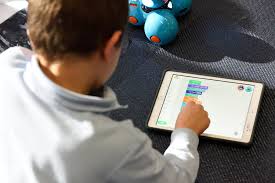How can I help my child memorize letters?
5 FUN Ways to Help Your Child Learn Their ABCs
- Read! Books are a great way to help your children learn their letters.
- Touch and Learn. Many kids learn through touch and experience.
- Alphabet Art. Kids with a creative streak will enjoy these activities.
- Eat the Alphabet.
- Active Alphabet.
How do you play the ABC game? Rules. Two Players perform a scene in which each line begins with the next sequential letter of the alphabet. After reaching the end, the Players then continue the scene, now going backwards through the alphabet. Offer the team ten points if they can get through the game without any mistakes.
Can I play ABCya for free? All content is free, though teachers can pay for a subscription to use an ad-free version. Games are also available on mobile devices with the subscription.
How do you make learning letters fun?
Make learning the alphabet fun with these 6 simple games
- Erase It. On a dry erase board, write random letters in a row.
- Hop To The Letter. On pleasant days, take educational fun outdoors.
- Make Play Doh® Letters. A few cans of Play Doh® always bring on the smiles.
- Scavenger Hunt.
- Pipe Cleaner Letters.
- Build Lego® Letters.
How can I help my child memorize letters? – Additional Questions
How do I teach my 5 year old to recognize letters?
5 Easy ways to teach the alphabet to preschoolers
- 1) Sing alphabet songs.
- 2) Play letter matching games.
- 3) Open a new ‘alphabet box’ each week.
- 3) Use interdisciplinary learning with each letter, to strengthen letter associations.
- 4) If you use flashcards to teach the alphabet, use logical ones.
Why can’t My 4 year old recognize letters?
Young toddlers aren’t developmentally ready for the abstract thinking required to understand that letters are symbols that represent sounds in our spoken language. It won’t be until your child has developed some phonemic awareness that he or she will begin to understand that words are made up of speech sounds in a row.
What age should a child know their letters?
A: Most children learn to recognize letters between ages 3 and 4. Typically, children will recognize the letters in their name first. By age 5, most kindergarteners begin to make sound-letter associations, such as knowing that “book” starts with the letter B.
How do you teach the alphabet?
8 Simple Tips for Teaching Kids the Alphabet
- Teach the name and the simple sound of each letter.
- Teach uppercase letters before lowercase.
- Introduce the complex sound of each letter.
- Provide alphabet printables.
- Read alphabet-themed books with your child.
- Use memory devices.
- Play multi-sensory activities with your child.
Which letters to teach first?
As soon as the learner acquires one letter sound correspondence, introduce a new one. Letters that occur frequently in simple words (e.g., a, m, t) are taught first. Letters that look similar and have similar sounds (b and d) are separated in the instructional sequence to avoid confusion.
What order is best to teach letters?
First, start with s, a, t, p, i, n. This combination of letters is perfect for introducing letter names and sounds and then actually APPLYING what you are teaching. These letters also make up the most frequent words that are found in emerging readers.
Should a 5 year old know the alphabet?
Typically, by the age of three, children should be able to recite the alphabet. However, every child is different. Some toddlers may learn in their twos, and others might not pick it up until the late threes. Children generally learn how to recite the alphabet through repetition.
How many letters should I teach a week?
However, that does not mean you should sit kids down for 30-minute letter learning lessons — you might work on letters 2 or 3 times per day, for anywhere from 5- to 20-minutes per sitting. I think a combination of 1-2 letters per week is reasonable, but I wouldn’t teach new letters every week.
Should you teach letter names or sounds first?
Teach the most common letter names first, the less common letter names last (q, z, x.). Every syllable of every word must have a vowel sound and there are many alternative spellings of vowel sounds, so it is very important that students have a sound knowledge of these.
How do you teach letter recognition to struggling students?
Daily Letter Recognition Practice
This individual time should begin by tracing letters and saying the letter names. You can do the whole alphabet, or only work the letters they are still struggling to master. Research has shown that repetition along with the tactile experience helps students commit letters to memory.
What are 3 techniques for teaching letter knowledge?
8 Strategies in teaching the alphabet
- #1 Teach letter names then letter sounds.
- #2 Teach uppercase then lowercase.
- #3 Introduce simple sounds then complex.
- #4 Use memory devices such as pictures, keywords, rhymes, actions.
- #5 Adjust pace according to the child’s needs.
- #6 Provide hands-on and multi-sensory activities.
How do you teach a stubborn child the alphabet?
Today, we’re going to explore some ideas for teaching the alphabet to reluctant learners.
Quick Tips for Reluctant Learners
- Wait.
- Make it meaningful to the child.
- Play, play, play!
- Don’t ask question after question after question.
- Take letters wherever you go.
- Pull out something that’s typically “forbidden”.




